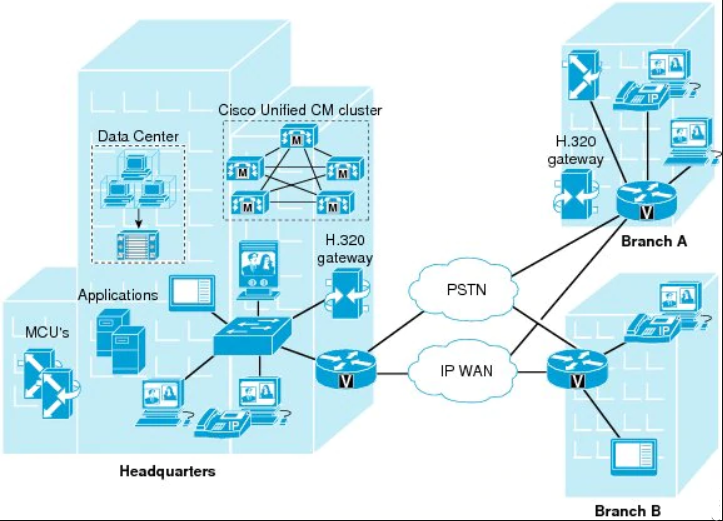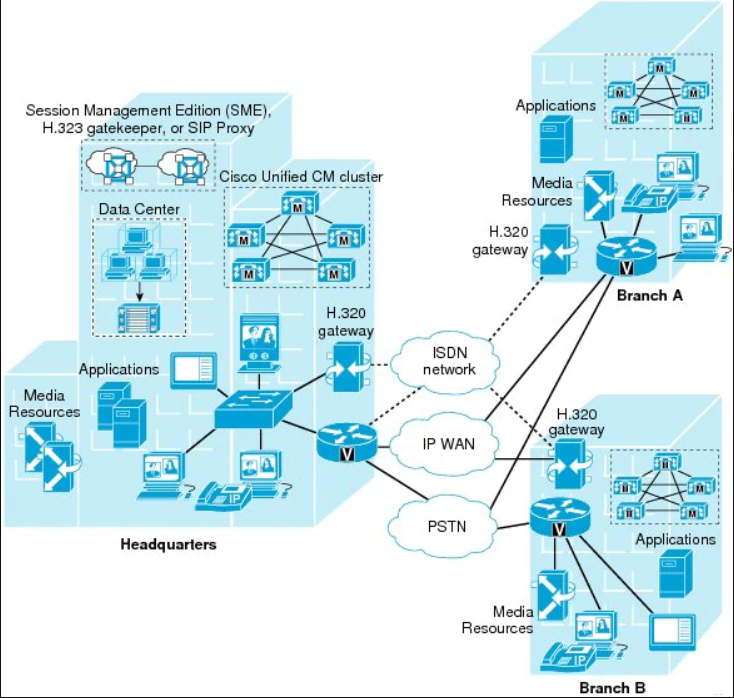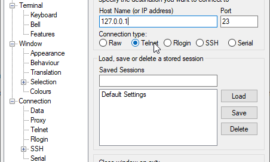UCM Deployment Models
CUCM Deployment is Designed and distributed in three different Models.
- Campus Deployment (Single Site Deployment).
- Multisite Deployment with Centralized Call Processing.
- Multisite Deployment with Distributed Call Processing.
Let’s understand each Deployment Model in detail.
Campus Deployment (Single-Site Deployment)

The campus model typically has the following design characteristics:
- A Single CUCM or CUCM cluster located at a single site with no telephony services provided over a WAN.
- All CUCM servers, applications, and digital signal processor (DSP) resources are located in the same physical location.
- Each cluster supports a maximum of 40,000 IP phones. If there is a need to deploy more than 40,000 IP phones in a single-site configuration, multiple clusters can be implemented inside a LAN or within a MAN and connected through intercluster trunks.
- Maximum of 2,100 gateways and trunks (that is, the total number of H.323 gateways, H.323 trunks, digital MGCP devices, and SIP trunks) per Unified CM cluster.
- Single-site deployment allows Calls between sites will be routed over the PSTN ( No IP Telephony over WAN).
- High-bandwidth audio is available (for example, G.722 or Cisco Wideband Audio) between devices within the site. Extra provisioning of WAN bandwidth is not needed.
- Dial plans are also easier to implement.
- There are no service issues in the event of an IP WAN failure or insufficient bandwidth, and there is no loss of call-processing service or functionality.
- Recommended for medium-sized businesses and government operations that reside at one site and that need basic call processing, some contact center capabilities, and basic messaging and conferencing.
Best practices for the single-site model include the following:
- This model is suited for enterprises where most calls are made to destinations within the same site or to the public switched telephone network (PSTN).
- Designing & implementing a highly available network infrastructure, with inline power, QoS, and security for phones.
- Use the Media Gateway Control Protocol (MGCP) between CUCM and voice gateways (assuming H.323 functionality is not required).
- Use the G.711 codec.
Benefits of Single Site Centralized Call Processing Model:
This solution provides significant cost benefits and enables CUCM to take advantage of the many IP-based applications available in the enterprise.
In this model of deployment each site can be completely self-contained. Calls between sites will be routed over the PSTN without any need of extra provisioning of WAN bandwidth. Dial plans are also easier to provision. In the event of an IP WAN failure or insufficient bandwidth, there is no loss of call-processing service or functionality and other related service issues.
In summary, the main benefits of the single-site model are as follows:
- Ease of deployment
- A common infrastructure for a converged solution
- Simplified dial plan
- No transcoding resources are required, due to the use of a single codec
Multisite Deployment with Centralized Call Processing.

The Multisite with Centralized model typically has the following design characteristics:
- A Single CUCM or CUCM cluster located at a single site with telephony services provided over a WAN.
- The remote sites rely on the centralized CUCM cluster to manage their call processing.
- Maximum of 2,000 locations or branch sites per Unified CM cluster.
- Maximum of 40,000 configured and registered IP phones per Unified CM cluster.
- Maximum of 2,100 gateways and per Unified CM cluster.
- PSTN connectivity for all off-net calls.
- Applications such as voice mail and interactive voice response systems are typically centralized as well to reduce the overall costs of administration and maintenance.
- In case of CUCM is down at Centralized Site, IP phones in Remote site uses CME to forward the voice traffic using PSTN link.
- Call Admission Control (CAC) is used to limit the number of calls between the sites.
- Recommended for businesses such as banks, which include a corporate headquarters and many local or regional offices
Best practices for the multisite WAN with centralized call-processing model include the following:
- Consider all the factors like WAN bandwidth, delay limitations, scalability, management, cost, features, and so on.
- Use CUCM locations for call admission control (CAC).
- Consider deploying Survivable Remote Site Telephony (SRST). For Skinny Client Control Protocol (SCCP) phones, use SRST or Cisco Unified Communications Manager Express (CME) in SRST mode, and for Session Initiation Protocol (SIP) phones, use SIP SRST. If you are using MGCP phones, use MGCP gateway fallback.
- Minimize delay between CUCM and remote sites as much as possible.
Benefits of Single Site Centralized Call Processing Model:
- This model saves PSTN costs for intersite calls by using the IP WAN instead of the PSTN. The IP WAN can also be used to bypass toll charges by routing calls through remote site gateways that are closer to the PSTN number that is dialed. This practice is known as Tail End Hop Off (TEHO). TEHO is not permitted in some countries, and local regulations should be verified before implementing TEHO.
- This deployment model maximizes the utilization of available bandwidth by allowing voice traffic to share the IP WAN with other types of traffic. Deploying QoS and CAC ensures voice quality. AAR reroutes calls over the PSTN if CAC denies the calls because of oversubscription.
- Cisco Extension Mobility can be used within the CUCM cluster, allowing roaming users to use their directory numbers at remote phones as if they were at their home phones.
- When the multisite WAN with centralized call-processing deployment model is used, CUCM administration is centralized, and therefore simpler, compared with a multisite WAN with distributed call-processing model where multiple clusters must be separately administered.
Multisite Deployment with Distributed Call Processing.

The multisite model with distributed call processing has the following design characteristics:
- A Single CUCM or CUCM cluster located at every single site with telephony services provided over a WAN.
- Each site in the distributed call processing model can be a centralized call processing site and all of its associated remote sites
- PSTN for all external calls.
- An IP WAN carries voice traffic between the distributed clusters.
- Capability to integrate with legacy private branch exchange (PBX) and voicemail systems.
- Call admission control is achieved through Enhanced Locations CAC or RSVP.
- Maximum utilization of available bandwidth is possible by allowing voice traffic to share the IP WAN with other types of traffic.
- Recommended for business operations that consist of multiple sites in various regions. Such operations include technology, manufacturing, transportation, and distribution and logistics companies.
Best practices for the multisite WAN with distributed call-processing model include the following:
- Follow general guidelines for the single-site and multisite WAN with centralized call-processing models, in addition to other specific best practices for this model.
- Use H.323 gatekeepers for CAC and dial plan resolution. Alternatively, use SIP proxies for dial plan resolution.
- Ensure high availability for gatekeepers by using mechanisms such as Hot Standby Router Protocol (HSRP) gatekeeper pairs, gatekeeper clustering, and redundancy using multiple gatekeepers. Similarly, if you are using SIP proxies, ensure that there is redundancy for these devices.
Benefits of Single Site Centralized Call Processing Model:
- The multisite deployment with distributed call-processing model is a superset of both the single-site and multisite WAN with centralized call processing models.
- The multisite WAN with distributed call-processing model provides the following benefits:
- PSTN call cost savings are possible when the IP WAN is used for calls between sites.
- In this model, you can use the IP WAN to bypass toll charges by routing calls through remote site gateways, closer to the PSTN number that is dialed—that is, TEHO.
- Maximum utilization of available bandwidth is possible by allowing voice traffic to share the IP WAN with other types of traffic.




